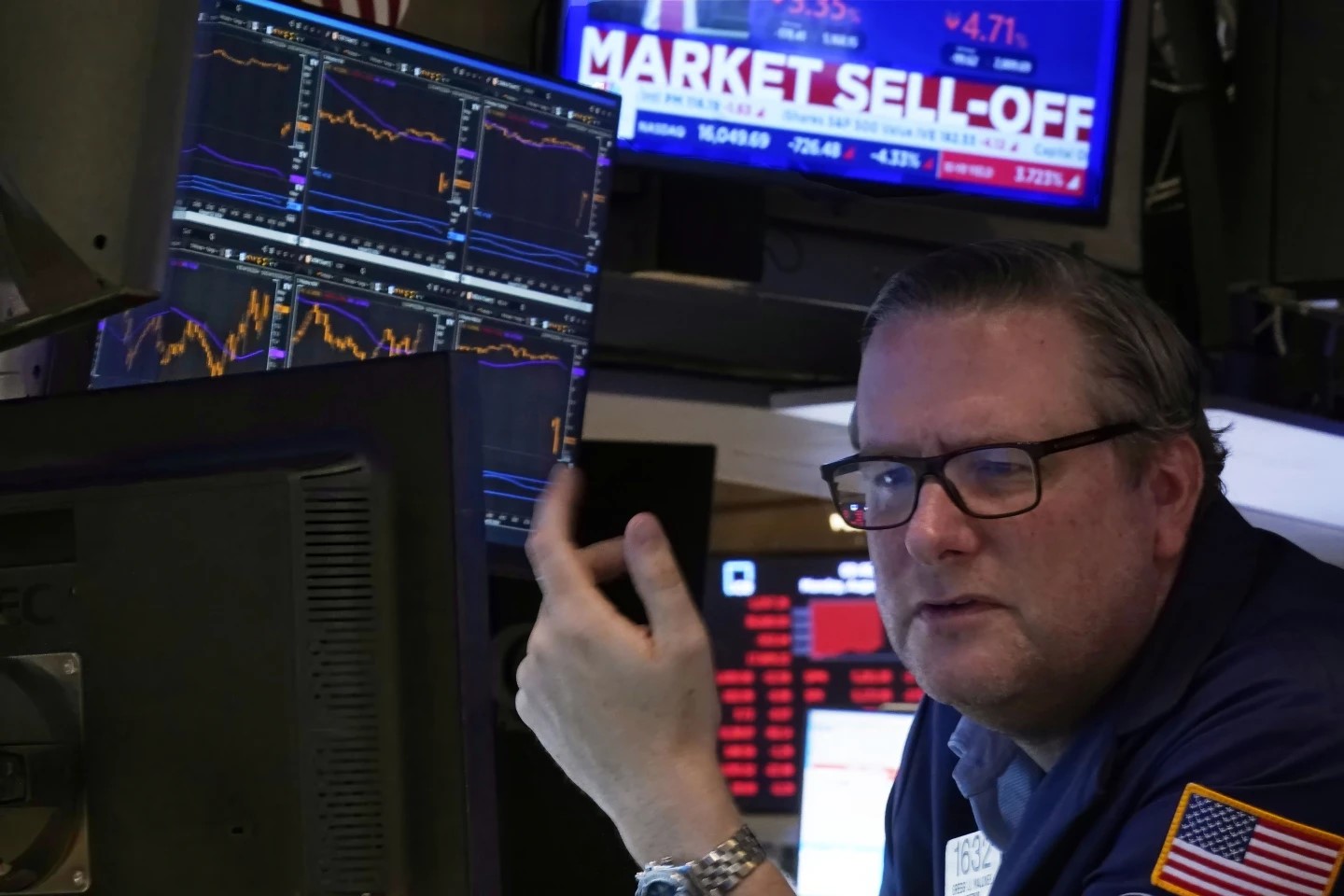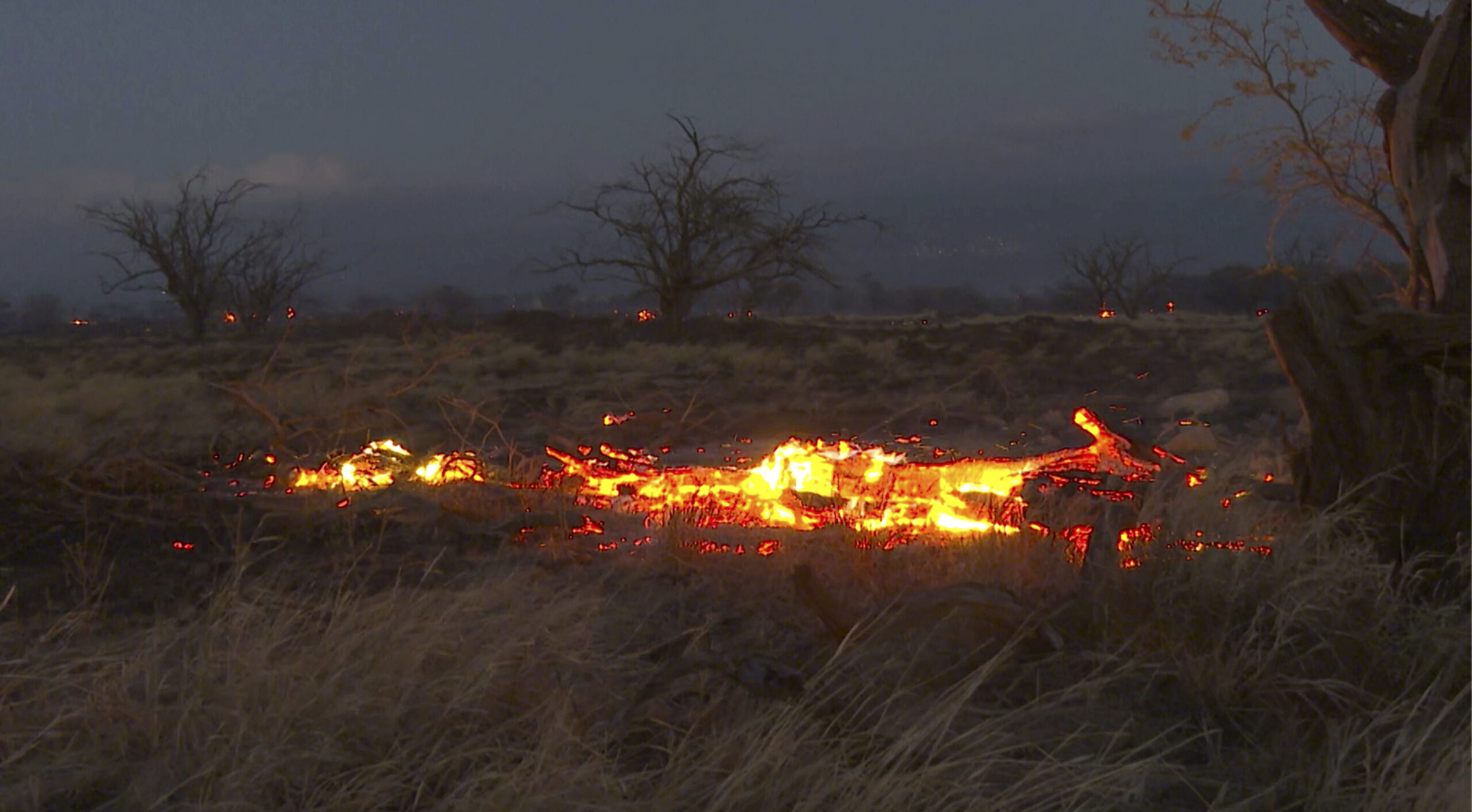The U.S. economy grew at a solid 3.2% annual rate in the first three months of the year, a far better outcome than expected, overcoming a host of headwinds including global weakness, rising trade tensions and a partial government shutdown.
The advance in the gross domestic product, the broadest measure of economic health, marks an acceleration from a 2.2% gain in the previous October-December period, the Commerce Department reported Friday. However, about half the gain reflected two factors not expected to last — a big jump stockpiling by businesses and a sharp contraction in the trade deficit.
Still, the GDP gain surpassed the 3% bar set by President Donald Trump as evidence his economic program is working. Trump is counting on a strong economy as he campaigns for re-election.
It was the strongest first quarter growth rate since 2015. In recent years, GDP has been exceptionally weak in the first quarter. There had been fears growth could dip below 1% this year due to a variety of adverse factors such as the December stock market nosedive, rising weakness in key economies overseas, the U.S. trade war with China and a 35-day partial government shutdown that ended in January.
But the economy shrugged off those concerns, helped by an announcement in early January from the Federal Reserve that after raising rates four times last year, it was declaring a pause on further rate hikes. That spurred a stock market rebound by easing concerns that the central bank might overdo its credit tightening and send the country into a recession.
Still, economists believe the current April-June quarter will not match the first quarter’s performance. Many are looking for GDP growth to slow to around 2% in the current quarter.
In the first quarter, inventory rebuilding added 0.7 percentage point to growth, while a falling trade deficit boosted growth by a full percentage point. Analysts think both of those factors will reverse in the current quarter.
Consumer spending, which accounts for 70% of economic activity, slowed to growth at a rate of just 1.2% in the first quarter. In particular, spending on durable goods fell at a rate of 5.3%, the biggest decline in a decade, led by a sharp drop in light truck sales.
Government spending was up 2.4% as a big 3.9% gain in state and local spending, reflecting increases in highway construction, offset a flat performance for the federal government. The government estimated that the 35-day partial federal shutdown trimmed 0.3 percentage point from growth in the first quarter after trimming fourth quarter growth by 0.1 percentage point.
For the year, economists believe GDP will expand 2.4%, down from last year’s 2.9% gain, as the boost from the 2017 tax cuts and increased government spending over the past two years start to fade.
The consensus view of private forecasters is well below expectations of the Trump administration which contends that its economic policies have broken a decade-long period when GDP gains averaged 2.2% annually. The administration is predicting growth will top 3% in coming years.
There are factors that could help lift growth in coming quarters. The global economy appears on better footing, given improvements in such major economies as China, and a trade war between the world’s two largest economies that appears closer to being resolved than it did at the start of the year.
Mark Zandi, chief economist at Moody’s Analytics, said he expects growth for this year to be around 2.2%, close to the average for the past 10 years.
“We got a temporary boost to growth last year because of the tax cuts but that money has been spent so we are back to the kind of growth we have had,” Zandi said. “I think we are back to the 2% world we have been in since the recession ended.”
The current recovery from the Great Recession of 2007-2009 is currently the second longest in history and will become the longest if it lasts past June.
But it has also been the slowest in the post-World War II period, a development economists attribute to slower growth in the labor force and weak gains in productivity.
Related Stories
‹

On the Porch: April News Roundup with Dr. Jim CrawfordThis Week:
Born into a blue collar and agricultural clan in rural Pennsylvania, Jim Crawford was the first in his family to graduate from college. Earning his PhD from UNC, he taught US and World History at several universities in piedmont North Carolina for several decades. He served as chairman of the Chatham County board of commissioners, and currently serves as trustee for Central Carolina Community College. He is a firm believer in American democracy and trusts that the constitution will hold firm now as it has in past crises despite the broken, distempered electorate.

On the Porch: A Conversation with Dr. Jim CrawfordThis Week:
Born into a blue collar and agricultural clan in rural Pennsylvania, Jim Crawford was the first in his family to graduate from college. Earning his PhD from UNC, he taught US and World History at several universities in piedmont North Carolina for several decades. He served as chairman of the Chatham County board of commissioners, and currently serves as trustee for Central Carolina Community College. He is a firm believer in American democracy and trusts that the constitution will hold firm now as it has in past crises despite the broken, distempered electorate.

Wall Street Opens Higher as Some Calm Returns After the Market’s Worse Loss in Almost 2 YearsWall Street appears poised to return to less chaotic trading Tuesday after a huge sell-off to start the week.

Maui Beckons Tourists, and Their Dollars, To Stave off Economic Disaster After WildfiresWritten by AUDREY MCAVOY and JENNIFER SINCO KELLEHER Richie Olsten has been in Maui’s helicopter tour business for a half century, so long he’s developed a barometer for the tourism-dependent economy: rental cars parked at the island’s airport. There are so many since wildfires killed at least 115 people in the historic town of Lahaina that Olsten […]

'Optimistic, But Also Cautious': Experts Discuss the State of the Local EconomyEconomists say we could see a minor recession in 2023, but unemployment will stay low and the local economy will remain strong.

Will Europe’s Ban on Russian Diesel Hike Global Fuel Prices?Written by DAVID McHUGH Europe is taking another big step toward cutting its energy ties with Russia, banning imports of diesel fuel and other products made from crude oil in Russian refineries. The European Union ban takes effect Feb. 5 following its embargo on coal and most oil from Russia. The 27-nation bloc is trying to sever […]
![]()
US Inflation Slows for 2nd Month but Remains Stubbornly HighWritten by CHRISTOPHER RUGABER U.S. inflation slowed for a second straight month on a sharp fall in gas prices, yet excluding energy most other items got more expensive in August, a sign that inflation remains a heavy burden for American households. Consumer prices surged 8.3% in August compared with a year earlier, the government said Tuesday, down […]

Sri Lanka’s Political Turmoil Sows Worries for RecoveryWritten by KRUTIKA PATHI and BHARATHA MALLAWARACHI A day after Sri Lanka’s president fled, Mohamed Ishad waited outside an immigration office near the capital, clutching a file of documents that he hopes will get his passport renewed so he can leave, too. With the nation in the throes of its worst economic crisis, Ishad has no […]

Economics of War: Pain for Europe Now, Later for RussiaWritten by THE ASSOCIATED PRESS Across Europe, signs of distress are multiplying as Russia’s war in Ukraine drags on. Food banks in Italy are feeding more people. German officials are turning down the air conditioning as they prepare plans to ration natural gas and restart coal plants. A giant utility is asking for a taxpayer bailout, and more […]

North Carolina Unemployment Rate Falls to 3.9% in NovemberWritten by THE ASSOCIATED PRESS North Carolina’s jobless rate for November fell to 3.9%, the state Commerce Department announced on Friday, as employment surged by one measurement released by the agency. The seasonally adjusted unemployment rate, which compares to 4.1% in October, continued its year-plus long decline after the state’s economy shook off the tightest […]
›









